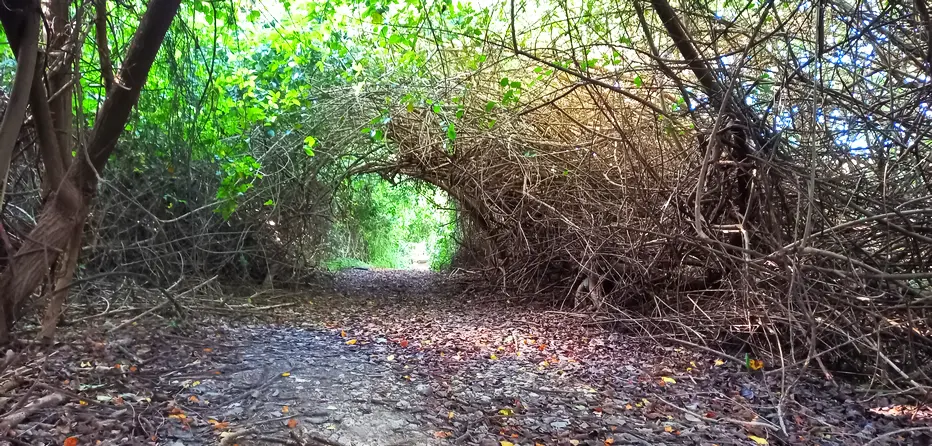Barbados Gullies: Pathways Through Time and Nature
Barbados is often imagined in shades of turquoise and gold - the sea and the sand. But venture inland, and the island reveals another palette entirely: deep emerald ravines, cool limestone walls, and the rustle of monkeys in the canopy. These are the gullies, natural corridors carved into the coral limestone, and they are among the island's most enchanting secrets.
🐒 A Sanctuary for Wildlife
Step into a gully and the world changes. The air cools, damp earth perfumes the breeze, and sunlight filters through towering trees. Green monkeys leap across branches or forage on the gully floor. Birds call from perches - sparrows, pigeons, finches and doves. Lizards scuttle across rocks, while bats retreat into the cool shadows.
For visitors, a walk through a gully is a chance to glimpse the island's wilder side, a reminder that Barbados is more than its cultivated cane fields and polished resorts.
👣 Pathways Through Time
Long before paved roads, gullies served as natural highways. Amerindians used them to traverse the island, following the shaded routes that offered water, food, and protection. Later, early English settlers relied on these same gullies to move between plantations.
Even today, locals in rural communities use gully paths to connect with neighbouring villages, while hikers traverse them as they trek through island's interior. Walking through a gully offers a cool respite from the sun.

🤔 Names That Spark Curiosity
Barbados' gullies carry names as colorful as the island itself!
Russia Gully, Whim Gully, Sailors Gully, Jack-In-The-Box Gully, and others hint at stories preserved in lore. Each name is a doorway into imagination, inviting visitors to wonder who first coined it and why.
Sailors Gully ??
Think about it then
click/tap to see
where the name came from.
Sailors Gully
Balsam trees were abundant in the gully. Their hanging roots reminded early settlers of the rigging of a sailing ship.
Whim Gully ??
Take a guess then
click/tap to learn
how this name originated.
Whim Gully
Dating back to at least 1875, the name is likely a whimsical reflection by the owner on his decision to buy the property!
🗺️ Experiencing the Gullies
You can explore gullies safely at places like Welchman Hall Gully, a managed reserve where nature thrives. Guided tours reveal both natural wonders and cultural stories, while self-guided walks let you explore at your own pace and linger in the cool shade.
Elsewhere, village gullies are best explored with hiking groups who have local knowledge of the terrain.

🪨 Born of Stone and Water
Geologically, gullies are the scars of time. Over centuries rainwater seeps through the land's coral limestone, slowly dissolving the rock and forming underground cave systems. Eventually, these caves become so large that their roofs collapse, creating a ravine that is further carved heavy rains deepening the gully. This subterranean connection explains why gullies often feel cool and damp. Surface erosion, local tectonic uplift, and global sea level changes also play in role in the formation of our gullies.
Beyond their beauty, gullies serve a practical purpose. Acting as natural watercourses, they channel heavy rains away from homes and roads, reducing flooding.
Barbados gullies are living proof of how water shapes land, and how land in turn shapes life.
⚠️ Modern Threats
Unfortunately our gullies face several challenges:
❌ Illegal dumping scars their beauty and poisons habitats
❌ Land use changes from agriculture to housing & commercial developments encroach on gully space
❌ A changing climate alters rainfall patterns, disrupting the delicate balance
❌ Invasive plants and animals threaten native species
Conservation projects are underway as local organizations, community groups, and government agencies work diligently to protect these spaces.






